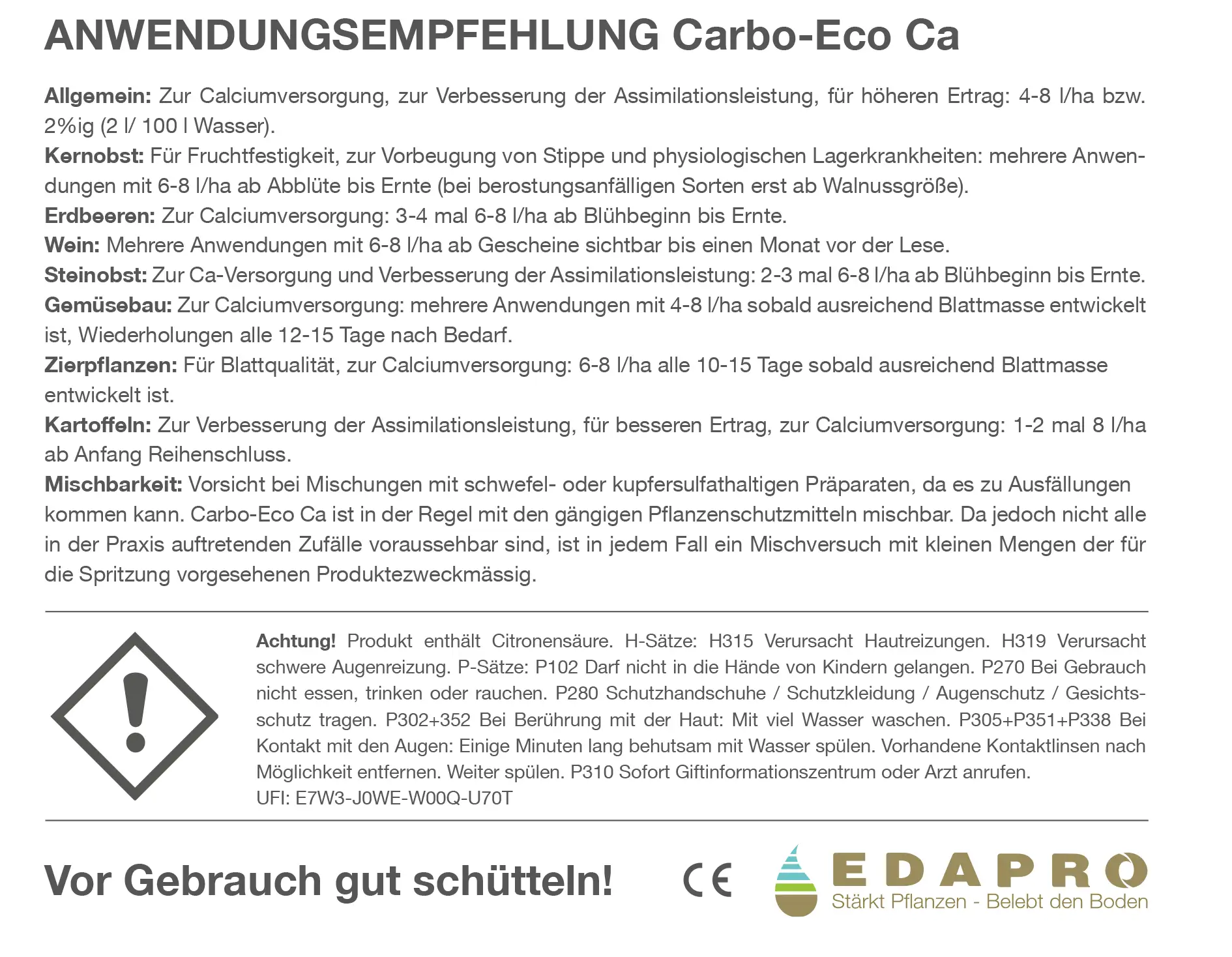Mode of action and benefits
Calcium foliar fertilisers are specially developed for application to the leaves. Calcium (Ca) is an important nutrient for plant growth. A deficiency of this nutrient can lead to problems such as blossom end rot in tomatoes or tip blight in lettuce. An acute nutrient deficiency can be quickly counteracted by applying it to the leaves.
The application of calcium leaf fertiliser can be combined with other leaf fertilisers and compost tea.
The chelation
A chelate is a chemical compound in which a metal ion is bound to a larger organic molecule, the chelating agent. This bond forms a complex that is both stable and soluble. The chelating agent usually forms multiple bonds with the metal ion, creating a ring-like structure. This unique structure of the chelate increases the stability and bioavailability of the metal ion and prevents it from precipitating or becoming inaccessible to plants or organisms.
Application and dosage
| Crop | Application rate |
|---|---|
| General | For calcium supply, to improve assimilation performance, for higher yield: 4-8 l/ha or 2% (2 l/ 100 l). |
| Viticulture | Several applications with 6-8 l/ha visible from shoots until one month before harvest. |
| Pome fruit | For fruit firmness, for the prevention of speck and physiological storage diseases: several applications with 6-8 l/ha from flowering to harvest (for varieties susceptible to russeting only from walnut size). |
| Stone fruit | 2-3 times 6-8 l/ha from the beginning of flowering until harvest. |
| Strawberries | 3-4 times 6-8 l/ha from the beginning of flowering until harvest. |
| Vegetables | several applications with 4-8 l/ha as soon as sufficient leaf mass has developed. |
| Potatoes | 1-2 times 8 l/ha from the beginning of row closure. |
| Sugar beet | Increase storage stability: 4 l/ha at the last fungicide spray. Before, if necessary, 2 l/ha to the fungicide measures. |
| Ornamental plants | 6-8 l/ha every 10-15 days as soon as sufficient leaf mass has developed. |














